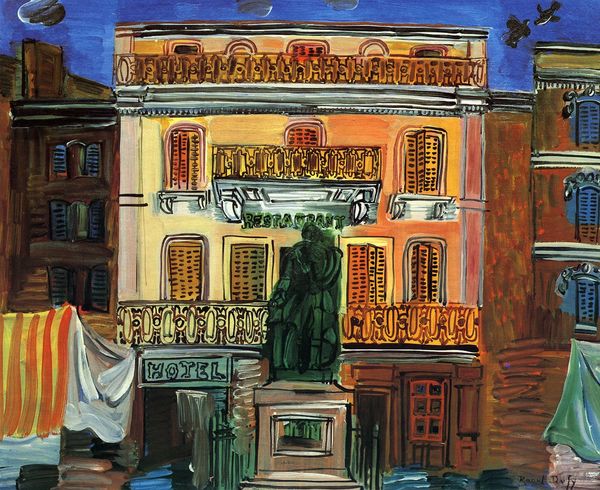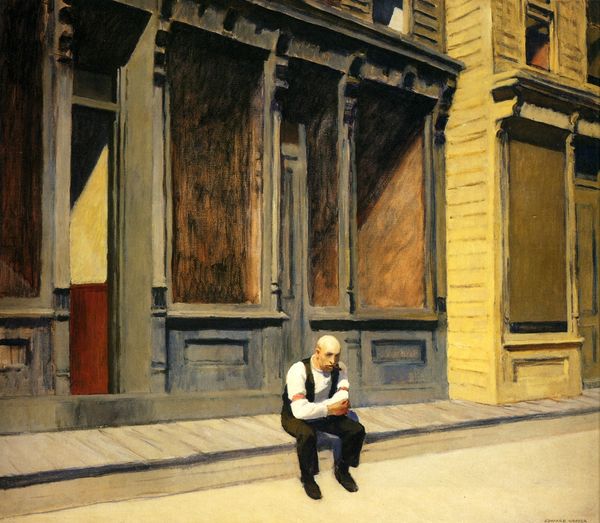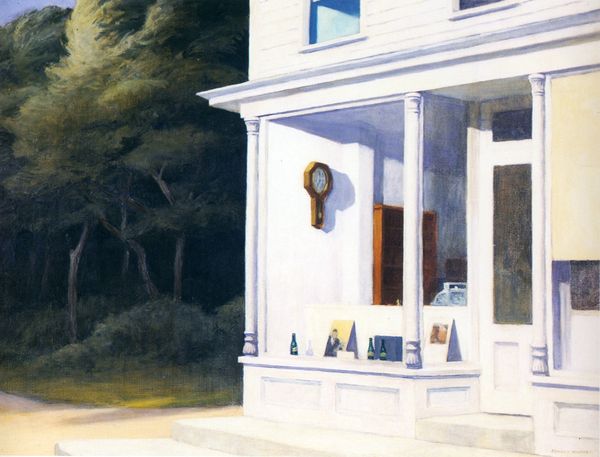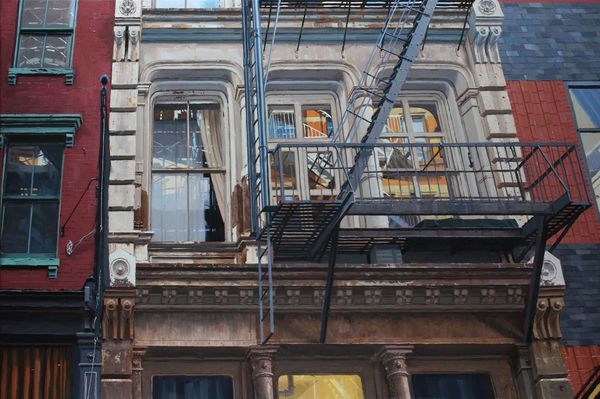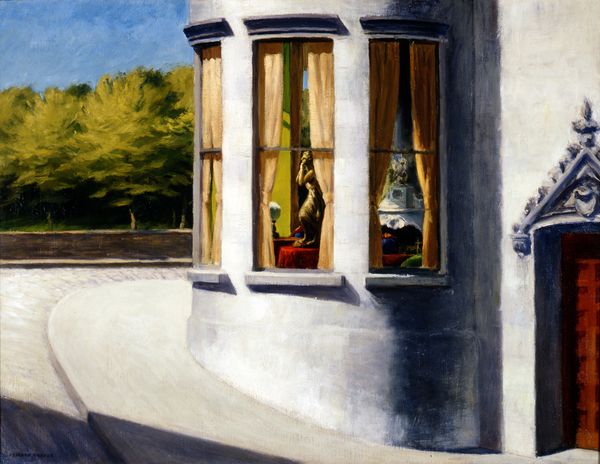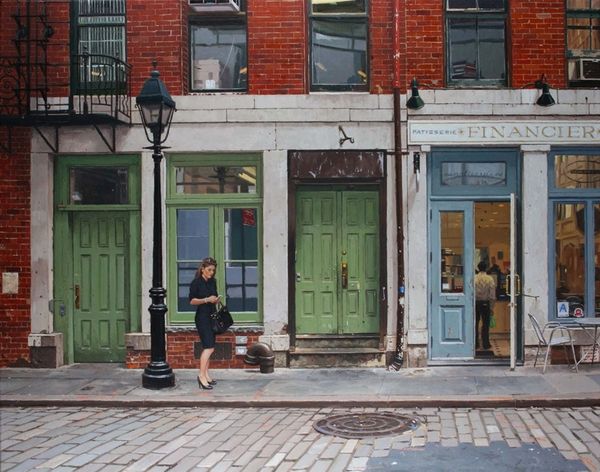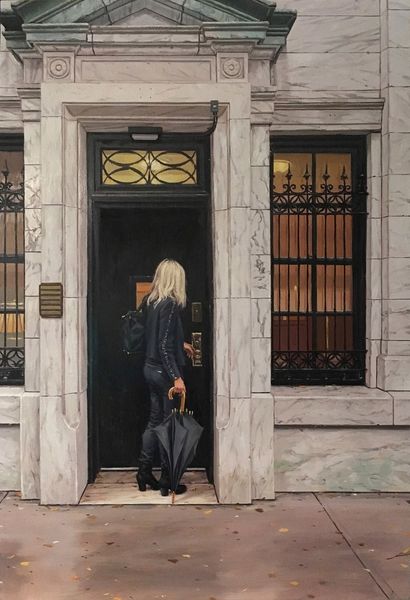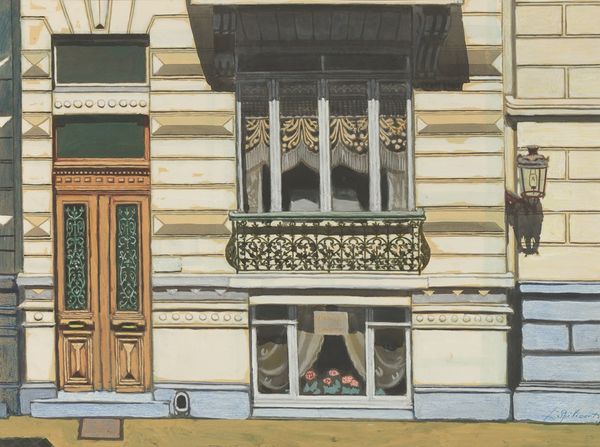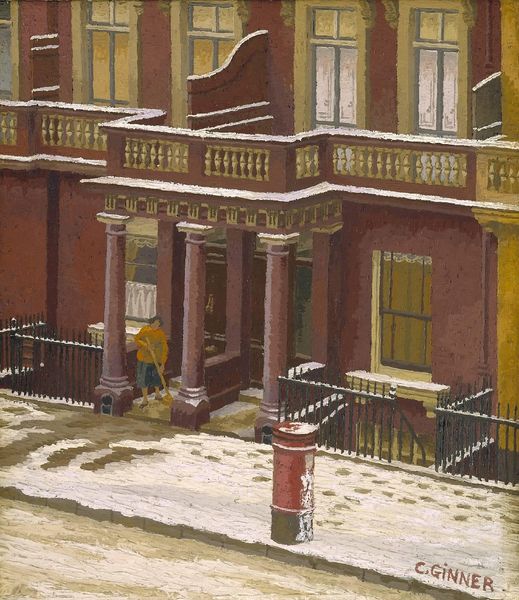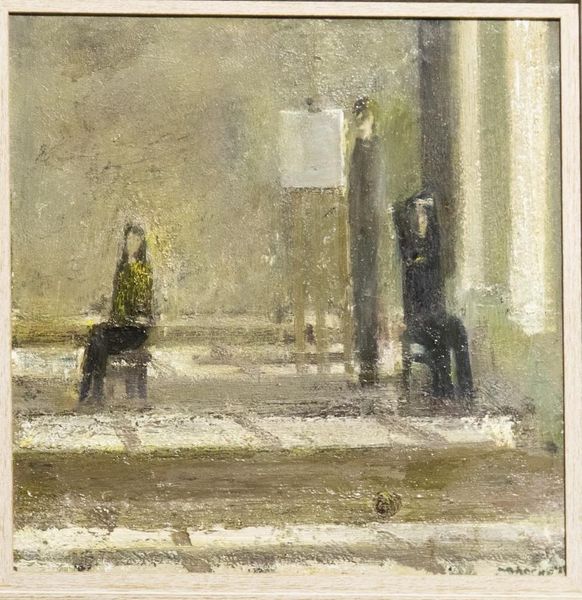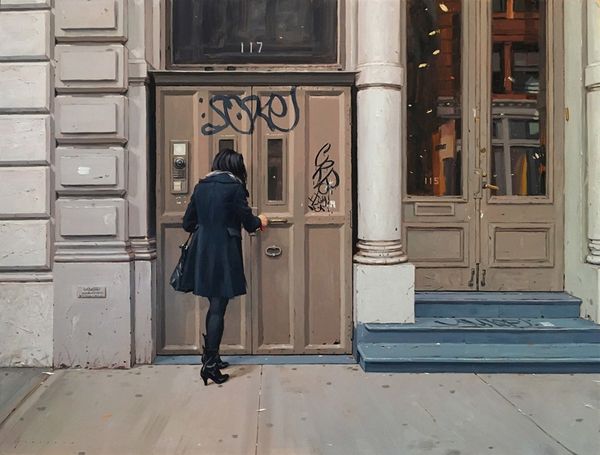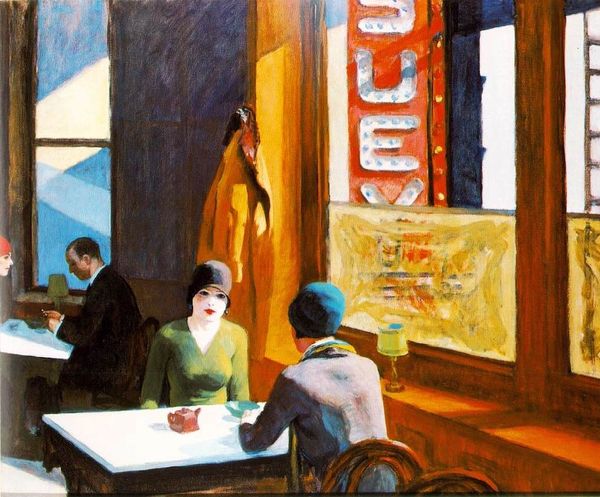
painting, oil-paint, architecture
#
painting
#
oil-paint
#
oil painting
#
column
#
ashcan-school
#
cityscape
#
genre-painting
#
modernism
#
architecture
#
realism
#
building
Copyright: Edward Hopper,Fair Use
Curator: This is Edward Hopper’s "New York Pavements," painted in 1924. Hopper was a master of realism, often focusing on urban scenes. What strikes you initially about this piece? Editor: It feels utterly deserted. The composition is interesting – cut off like a movie still, with this forbidding doorway practically daring you to come closer, while the shadows feel like cold indifference. What's the story? Curator: Hopper frequently captured moments of urban isolation and quiet. You see that in the grand architecture looming over the foreground where we catch sight of two figures. It's rendered in oil paint and exemplifies aspects of the Ashcan School's gritty realism while subtly nodding toward Modernism with its simplified forms. Those columns, that portico... Editor: Almost funereal, aren't they? Like the entrance to a mausoleum instead of a welcoming home. It’s curious that you would consider the work realist—there's something intentionally stage-managed about this tableau that's unsettling. Curator: Indeed. Hopper wasn’t just depicting reality. The symbolism here is potent. Notice how the strong, geometric architecture almost dwarfs the figures. They're like interlopers or players against this urban backdrop, reminding us perhaps about our small place in a huge and increasingly mechanized world. The light almost seems to accuse rather than illuminate, too, accentuating this mood of existential alienation. Editor: So, it's less about depicting what *is* and more about projecting the experience of *being* in a modern city—the disconnect, the melancholy, the sheer weight of expectation… Those faceless figures contribute to that effect enormously, adding an element of mystery but also amplifying the loneliness. I could almost hear a pin drop in that urban cavern of existence! Curator: Precisely. And with "New York Pavements", we are invited to witness, to feel that subtle yet pervasive disconnect that haunted Hopper’s vision of America. It resonates even today. Editor: Yes, in its quiet way, it's more confrontational and unnerving than many ostensibly 'grittier' works. Makes you want to step inside and offer everyone a hot beverage—but knowing you would only find deeper shadows!
Comments
No comments
Be the first to comment and join the conversation on the ultimate creative platform.
